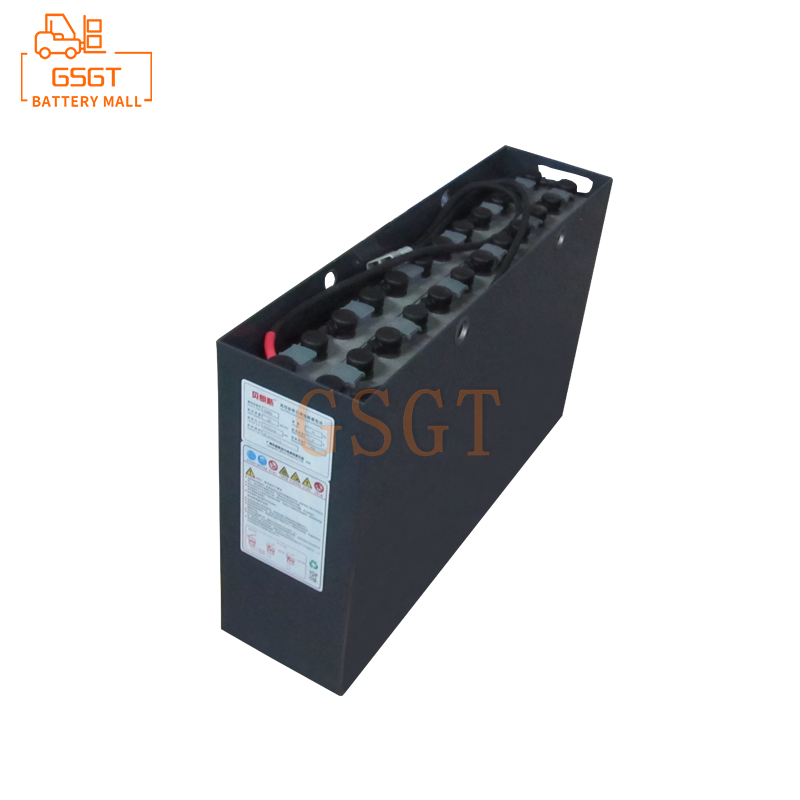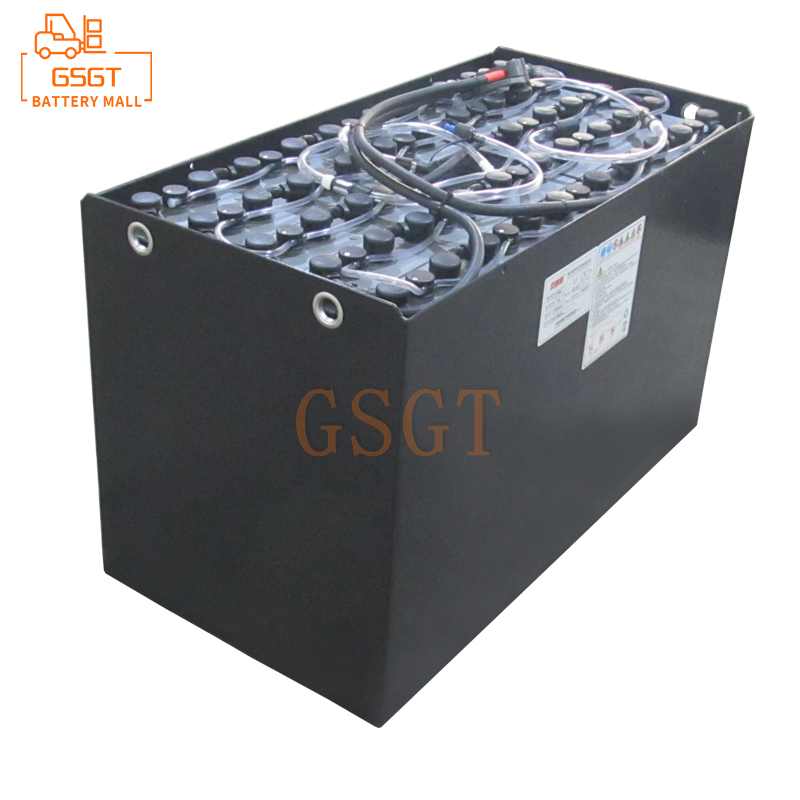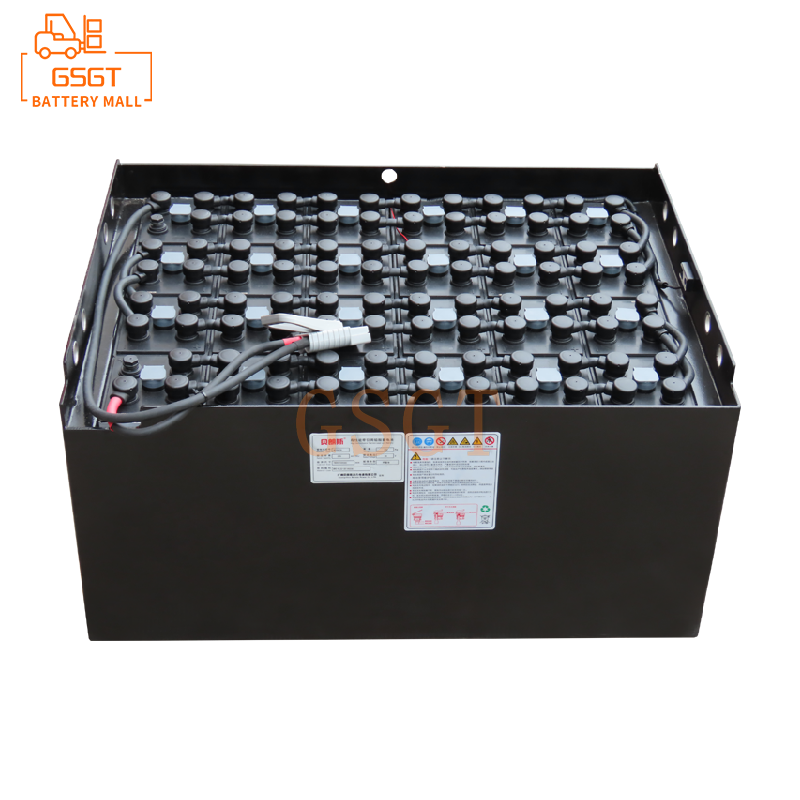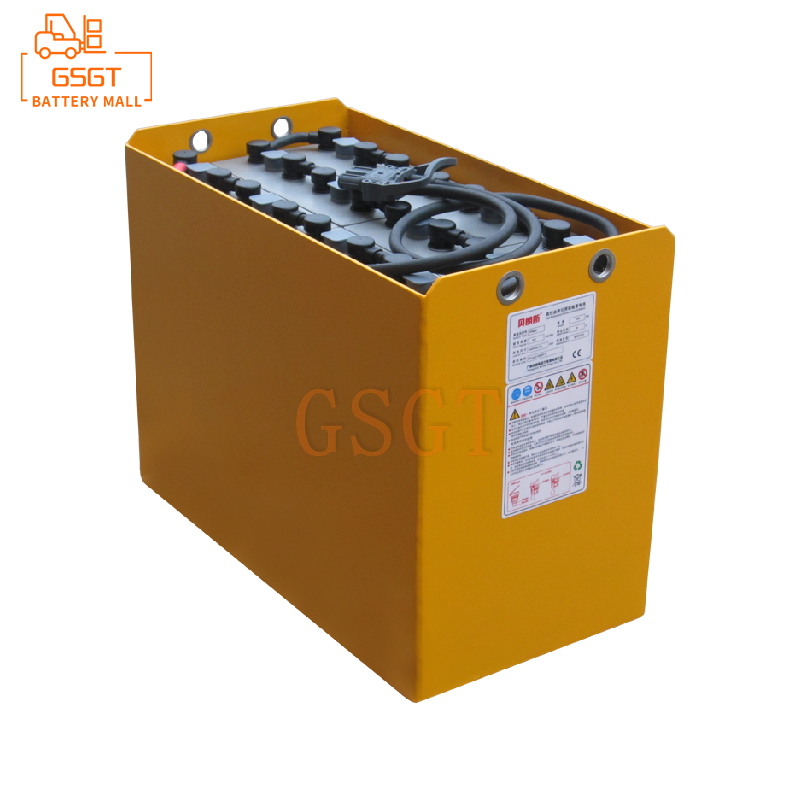Time:2025-06-16 10:41:33
Browse:664
During the operation of forklifts, lead-acid batteries serve as the power source, and their technical parameters are of great significance to the performance and usage of forklifts. This article will interpret the key technical parameters of forklift lead-acid batteries to help you better understand and apply them.
1. Voltage
(1) Common Voltage Specifications
Common voltages of lead-acid batteries for forklifts include 24V, 48V, 80V, etc. Different types and uses of forklifts are compatible with different battery voltages. Small electric forklifts may use 24V or 48V batteries, while large warehouse forklifts or heavy-duty forklifts may require 80V or even higher voltage batteries.
(2) The Influence of Voltage on Forklift Performance
1. ** Power Output ** : The higher the voltage, the stronger the battery's energy storage capacity theoretically, which can provide more powerful power for forklifts. High voltage can make forklifts more powerful when starting, accelerating and climbing slopes, and easier to handle heavy objects. For instance, forklifts used in ports and logistics centers to transport large containers usually employ high-voltage batteries to meet the powerful power demands.
2. ** Electrical System Requirements ** : High-voltage batteries have higher requirements for the electrical system of forklifts. Electrical components need to be able to withstand high voltages; otherwise, they are prone to damage. This means that forklifts equipped with high-voltage batteries have higher electrical system costs and stricter design and manufacturing requirements.
2. Capacity
(1) Units for expressing capacity
Battery capacity is usually expressed in "ampere-hours (Ah)", which reflects the amount of electricity a battery can provide under specific conditions such as temperature and discharge rate.
(2) The Relationship between Capacity and Battery life
The larger the capacity, the stronger the forklift's endurance after a single charge. In places such as logistics warehouses and factory workshops, if forklifts need to operate continuously for long periods of time, choosing large-capacity batteries can reduce the number of charging cycles and improve work efficiency. However, large-capacity batteries also have disadvantages, such as increased volume and weight, which may affect the handling of forklifts, and higher costs.
(3) Factors Affecting Capacity
1. ** Discharge rate ** : Different discharge rates result in different actual discharge capacities of the battery. Generally, the higher the discharge rate, the lower the capacity that the battery can release. For example, the capacity of the same battery discharged at a rate of 10 hours will be larger than that discharged at a rate of 5 hours.
2. **Temperature**: Temperature has a significant impact on battery capacity. At low temperatures, the rate of chemical reactions inside the battery slows down, the viscosity of the electrolyte increases, and the resistance to ion diffusion increases, resulting in a decrease in battery capacity. At high temperatures, although the speed of chemical reactions increases, it may accelerate the aging of batteries and shorten their service life. Therefore, the optimal operating temperature for lead-acid batteries is around 25℃. If the temperature is too high or too low, measures such as heating or cooling systems should be taken to ensure battery performance.
3. Dimensions and Weight
(1) The Importance of Size
The size of lead-acid batteries varies by brand and model. Common size parameters include length, width and height. Users need to select the appropriate battery based on the size of the forklift battery compartment. If the battery size is too large, it cannot be installed. If the size is too small, it may not be fixed firmly and shake during the operation of the forklift, which will affect the battery life and the safety of the forklift. In addition, the size of the battery may also affect the overall layout and space utilization of the forklift.
(2) The influence of weight
1. **Load capacity**: The weight of lead-acid batteries is related to their capacity and size. Generally, the greater the weight, the stronger the energy storage capacity. However, an overly heavy battery will increase the forklift's own weight and affect its load capacity. For instance, a forklift with an original rated load capacity of 2 tons may have a reduced actual weight of goods it can handle if it is equipped with an overly heavy battery.
2. ** Handling ** : An overly heavy battery can change the center of gravity of the forklift, affecting its handling. When turning, accelerating or braking, the stability of forklifts deteriorates, increasing the difficulty of operation and the risk of accidents. Therefore, when choosing a battery, a balance needs to be struck between the battery capacity requirement and the forklift's handling performance.
4 Charging Time
(1) Factors affecting Charging time
1. ** Battery capacity ** : The larger the capacity, the longer the charging time. For instance, a 400Ah battery takes longer to charge than a 200Ah battery.
2. ** Charger power ** : The greater the charger power, the faster the charging speed. However, it should be noted that a charger with excessively high power may cause damage to the battery. Therefore, a charger with an appropriate power should be selected based on the battery specifications.
3. ** Charging Methods ** : The charging methods include fast charging and slow charging. Fast charging can replenish a large amount of power to the battery in a short time, but it may affect the battery life. Although slow charging takes a long time, it causes less damage to the battery. Some forklift lead-acid batteries support fast charging technology, which can charge the battery to about 80% in a relatively short time and then switch to slow charging mode to protect the battery.
(2) Suggestions for reasonably arranging charging time
To extend the battery life, it is necessary to avoid overdischarging the battery before charging it. During the intervals of forklift operation, if there is an opportunity, "shallow charging and shallow discharging" can be carried out, that is, each charging should not be fully charged and each discharging should not be completely discharged. In addition, the charging plan should be reasonably arranged based on the usage frequency and work intensity of the forklift to ensure that the battery always has sufficient power during operation and is not overcharged.
5. Cycle Life
(1) Definition of Cycle life
Cycle life refers to the number of complete charge and discharge cycles a battery can undergo under specific conditions. A complete charge and discharge cycle refers to the process in which a battery discharges from a fully charged state to the specified terminal voltage and then charges back to a fully charged state.
(2) Factors Affecting Cycle life
1. ** Depth of discharge ** : The depth of discharge refers to the percentage of the battery's discharge capacity to its rated capacity. The deeper the discharge depth, the shorter the battery's cycle life. For example, the cycle life of each battery discharge to a depth of 50% is shorter than that of each discharge to a depth of 20%. Therefore, when using forklifts, it is necessary to avoid excessive battery discharge as much as possible and control the depth of discharge within a reasonable range.
2. ** Charging Method ** : Unreasonable charging methods, such as overcharging and undercharging, will shorten the battery's cycle life. Overcharging can cause the battery to heat up, accelerate the aging of the plates, and lead to problems such as water loss and swelling of the battery. Undercharging will cause insufficient chemical reactions inside the battery. Long-term undercharging will lead to a decrease in battery capacity. Therefore, it is necessary to use the appropriate charger and follow the correct charging process.
3. ** Operating Ambient Temperature ** : Temperature has a significant impact on the battery's cycle life. High-temperature environments will accelerate the chemical reactions inside the battery, intensify the corrosion of the plates and shorten the cycle life. In low-temperature environments, battery capacity decreases, charging and discharging performance deteriorates, and cycle life is also affected. Therefore, it is necessary to keep the ambient temperature of the battery usage environment within an appropriate range as much as possible and take temperature control measures when necessary.
6. Other technical parameters
(1) Internal resistance
Internal resistance refers to the hindrance effect of the battery's interior on the current. The smaller the internal resistance, the better the battery performance. Low internal resistance can make the output voltage of the battery more stable during discharge, reduce energy loss and improve the battery's utilization efficiency. In scenarios with high current discharge, such as when forklifts start and accelerate, low internal resistance batteries can better meet the demand for instantaneous high current and ensure the power output of forklifts.
(2) Specific gravity of the electrolyte
The electrolyte is an important component of lead-acid batteries, usually composed of sulfuric acid and water mixed in a certain proportion. The specific gravity of the electrolyte reflects the concentration of sulfuric acid and has an important impact on the performance of the battery. When fully charged, the specific gravity of the electrolyte is generally 1.28g/cm³ at 25℃. As the battery discharges, sulfuric acid participates in chemical reactions, and the specific gravity of the electrolyte gradually decreases. By measuring the specific gravity of the electrolyte, the remaining power of the battery can be roughly determined. However, it should be noted that the specific gravity of the electrolyte is affected by temperature, and temperature correction is required during measurement.
(3) Self-discharge rate
Self-discharge rate refers to the rate at which a battery loses its electrical energy on its own when it is in an open-circuit state. Lead-acid batteries have a certain self-discharge phenomenon. The lower the self-discharge rate, the better the battery's storage performance. For forklifts that have been stored for a long time, if the battery self-discharge rate is high, it may lead to low battery power, affecting the next use. To reduce the impact of self-discharge, batteries should be kept fully charged when stored and replenished regularly.
7. Comprehensive Consideration and Application of Technical Parameters
When choosing lead-acid batteries for forklifts, it is necessary to comprehensively consider various technical parameters and combine them with the actual usage scenarios and requirements of the forklift. If forklifts frequently move goods over short distances in indoor warehouses, batteries with moderate voltage, capacity sufficient for single operation time, size and weight suitable for forklift battery compartments, and long cycle life can be selected. If forklifts are used in harsh environments such as outdoor construction sites, in addition to considering the above factors, attention should also be paid to the battery's temperature resistance and anti-vibration performance.
At the same time, understanding the technical parameters of batteries is helpful for the correct use and maintenance of batteries, extending their service life and reducing usage costs. For instance, based on battery capacity and charging time, arrange the forklift operation and charging plan reasonably; By monitoring the specific gravity of the electrolyte and the internal resistance of the battery, potential problems of the battery can be detected in a timely manner and measures can be taken.
In conclusion, the technical parameters of lead-acid batteries for forklifts are interrelated and jointly affect the battery performance and the operational efficiency of forklifts. Only by deeply understanding these parameters can a better choice be made and the efficiency of the forklift be fully exerted.

$1060

$3050

$5710

$1690

MESSAGE
Professional And Efficient
Security
Affordable Price
Professional Services